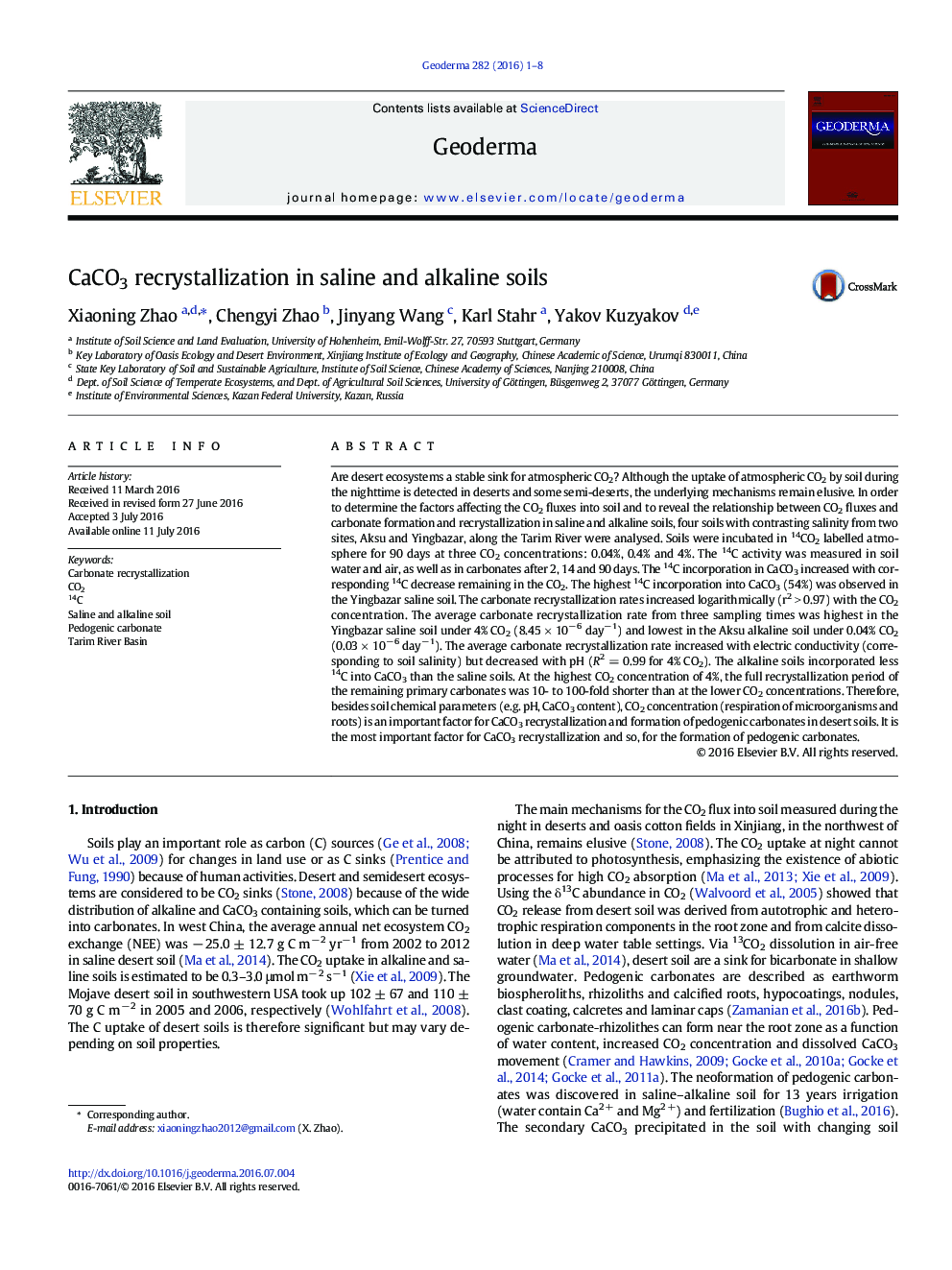| Article ID | Journal | Published Year | Pages | File Type |
|---|---|---|---|---|
| 4572859 | Geoderma | 2016 | 8 Pages |
•The 14C incorporation in CaCO3 increased as the 14C remaining in the CO2 decreased.•The carbonate recrystallization rates increased with the CO2 concentration.•The alkaline soils incorporated less 14C into CaCO3 than the saline soils.
Are desert ecosystems a stable sink for atmospheric CO2? Although the uptake of atmospheric CO2 by soil during the nighttime is detected in deserts and some semi-deserts, the underlying mechanisms remain elusive. In order to determine the factors affecting the CO2 fluxes into soil and to reveal the relationship between CO2 fluxes and carbonate formation and recrystallization in saline and alkaline soils, four soils with contrasting salinity from two sites, Aksu and Yingbazar, along the Tarim River were analysed. Soils were incubated in 14CO2 labelled atmosphere for 90 days at three CO2 concentrations: 0.04%, 0.4% and 4%. The 14C activity was measured in soil water and air, as well as in carbonates after 2, 14 and 90 days. The 14C incorporation in CaCO3 increased with corresponding 14C decrease remaining in the CO2. The highest 14C incorporation into CaCO3 (54%) was observed in the Yingbazar saline soil. The carbonate recrystallization rates increased logarithmically (r2 > 0.97) with the CO2 concentration. The average carbonate recrystallization rate from three sampling times was highest in the Yingbazar saline soil under 4% CO2 (8.45 × 10− 6 day− 1) and lowest in the Aksu alkaline soil under 0.04% CO2 (0.03 × 10− 6 day− 1). The average carbonate recrystallization rate increased with electric conductivity (corresponding to soil salinity) but decreased with pH (R2 = 0.99 for 4% CO2). The alkaline soils incorporated less 14C into CaCO3 than the saline soils. At the highest CO2 concentration of 4%, the full recrystallization period of the remaining primary carbonates was 10- to 100-fold shorter than at the lower CO2 concentrations. Therefore, besides soil chemical parameters (e.g. pH, CaCO3 content), CO2 concentration (respiration of microorganisms and roots) is an important factor for CaCO3 recrystallization and formation of pedogenic carbonates in desert soils. It is the most important factor for CaCO3 recrystallization and so, for the formation of pedogenic carbonates.
